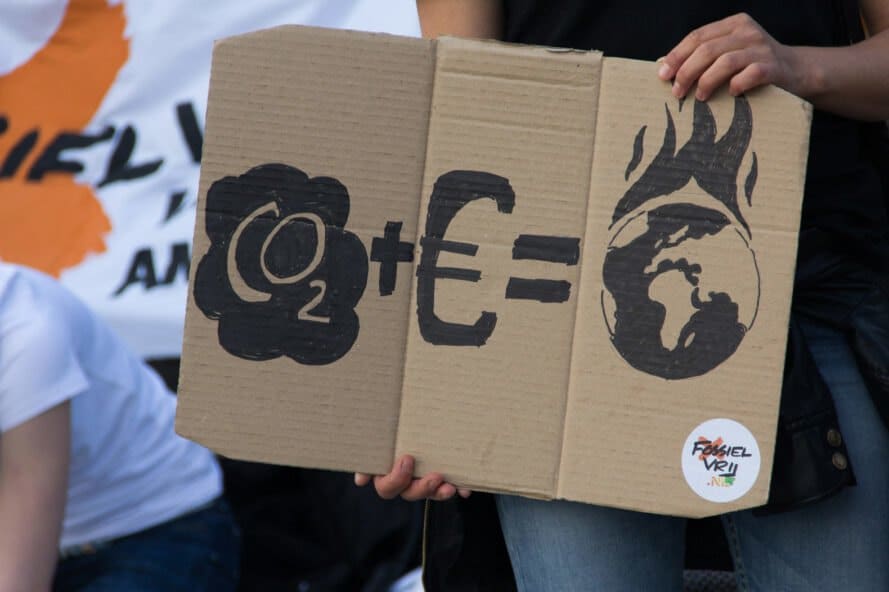On Friday, March 15, tens of thousands of high school and middle school students in more than 70 countries plan to walk out of their classrooms and protest at town and city halls. Young people are uniting around the world in a coordinated demand for their leaders to take radical action to curb greenhouse gas emissions and slow down the impacts of climate change.
How did the climate strikes start?
The international youth climate strike movement began in August 2018 when 16-year-old environmental activist, Greta Thunberg skipped school to protest outside the Swedish Parliament. Since August, her actions caused a ripple effect throughout the world and snowballed the movement to include teens throughout the world.
Since Thunberg’s protest, students have similarly skipped out on school to hold up “Youth Climate Strike” and “School Strike for Climate” signs outside government buildings in the U.K., U.S., Japan, Uganda, Germany, Thailand, Switzerland and France, among others. Frustrated by inaction— or insufficient action— from politicians throughout their young lives, these students are panicked about the scientific predictions for the future and unwavering in their call for change.
In New York, for example, 13-year-old Alexandria Villasenor has forgone her classes for the past twelve consecutive Fridays in order to sit outside the U.N. headquarters and protest. On Friday, March 15, thousands of others will join what the young people have virally hashtagged as #FridaysForFuture.
Find a Climate Strike near you
To date, there will be over 700 strikes in 71 countries, however the number continues to grow as rallies are added to the map.
- Check out this world-wide map to see the incredible number of strikes across the globe.
- This U.S. climate strike map is tracking all of the registered climate strikes in the U.S.
Students are rallying around the hashtags #FridaysforFuture and #YouthClimateStrike, in honor of Thunberg and other student activists who have skipped school to protest for climate action in the past months. The strikes are supported by outspoken environmental groups such as the Sunrise Movement and Extinction Rebellion. Climate Strike leaders are calling on students to walk out of their classes on Friday, March 15, to protest outside of the nearest town or city hall, and of course post a photo on social media.
Not all students get a free pass
Many of the U.S. climate strikes will take place at local House or Senate representatives’ offices where the youth plans to push for acceptance of the Green New Deal, a radical environmental proposal championed by Alexandria Ocasio-Cortez (D-NY). Similar protests have already met with dismay by representatives such as Nancy Pelosi and Diane Feinstein, both Democrats from California, who feel the students are naively confident in the Green New Deal without understanding the complexities of politics and party relations.
Related: Rep. Ocasio Cortez releases green new deal
In the U.K., the Prime Minister condemned the climate strike as wasteful of teachers’ time. In Australia, despite support for the protests by labor unions, the Minister of Education announced that all students and teachers who leave school on Friday will be punished— to which Greta Thunberg quickly tweeted back “we don’t care.”
Isra Hirsi, daughter of freshman Representative, Ilhan Omar (D-MN), is one of the young leaders of the behind U.S. climate strikes, but she also expressed concern about the movement’s lack of intersectionality– in other words its lack of recognition and inclusion of climate leaders from many different, overlapping and often disadvantaged, demographic groups. Early this week, Hirsi tweetedabout the importance of recognizing that indigenous leaders, not young white students, have been leading climate activism long before these hashtags.
What are the students asking for?
The strikes are largely a response to a UN Framework Convention on Climate Change report, which indicates that the world has less than 12 years to implement radical change or the impacts of global warming will be devastating and irreversible.
Mark Hertsgaard from The Nation wrote of the students: “They grasp what many of their elders apparently never learned: The climate struggle is not about having the best science, the smartest arguments, or the most bipartisan talking points. It is about power — specifically, the power that ExxonMobil and the rest of the fossil-fuel industry wield over governments and economies the world over, and their willingness to use that power to enforce a business model guaranteed to fry the planet.”
While students around the world have different demands from their respective leaders, they are united in their call for swift and decisive action to curtail carbon emissions and for politicians to adopt firm environmental platforms. Such platforms, though, might look drastically different in each country.
Columnist for The Guardian, George Monbiot, argued that the students must develop and articulate a clear position, or else he fears they will be divided, co-opted or worse– ineffective at ultimately influencing the actual legislation that will save their futures.
Via The Nation









